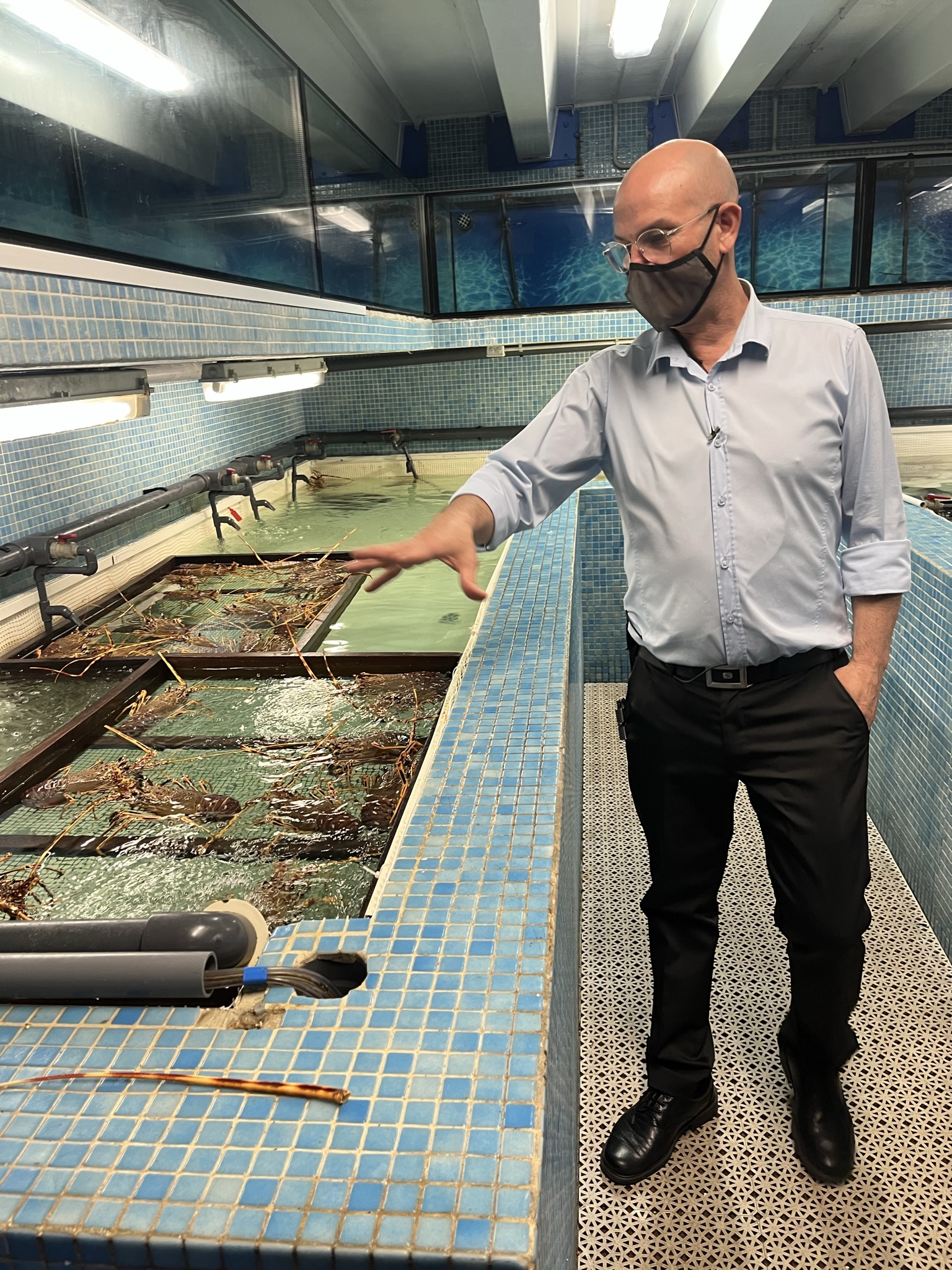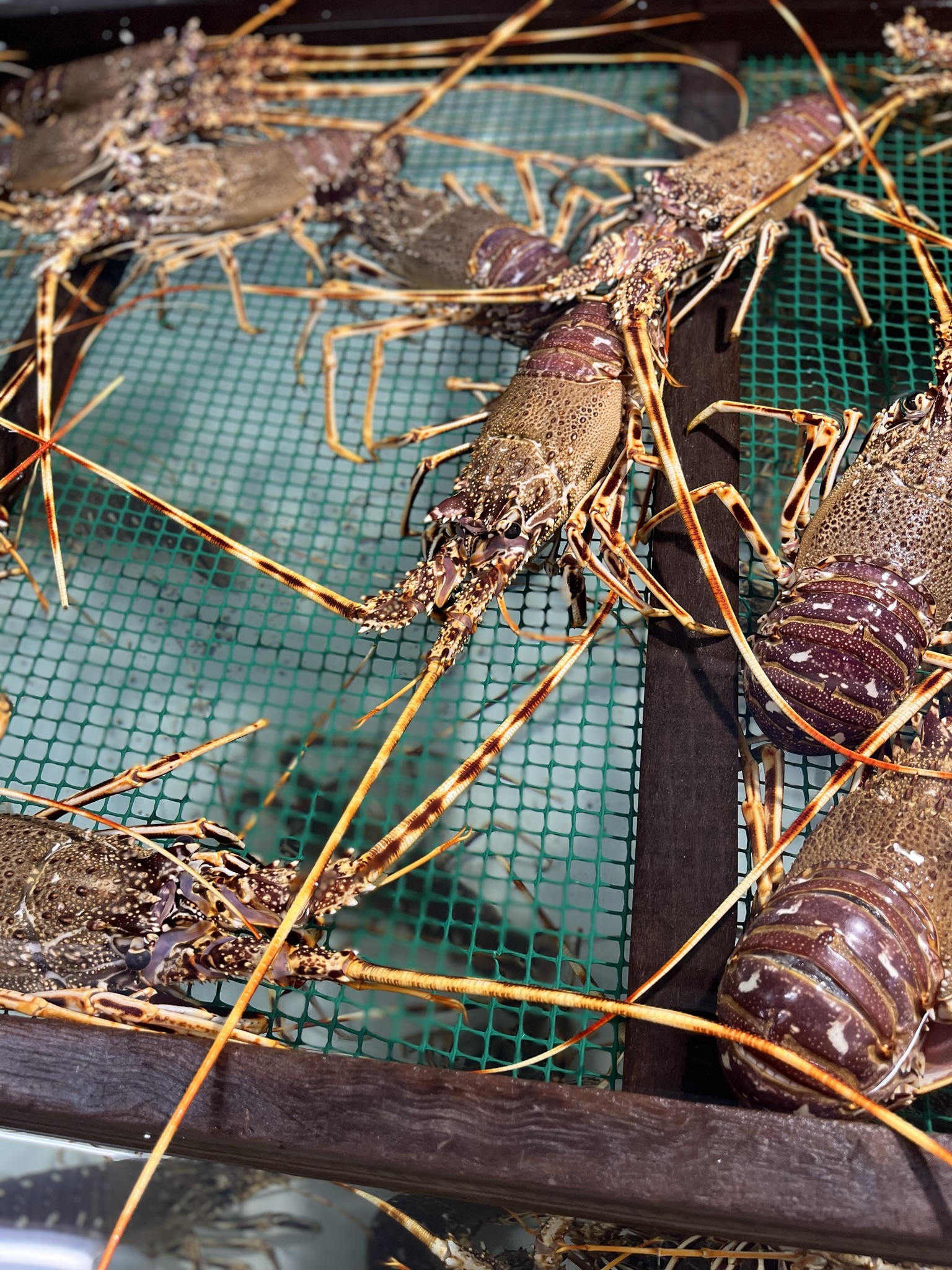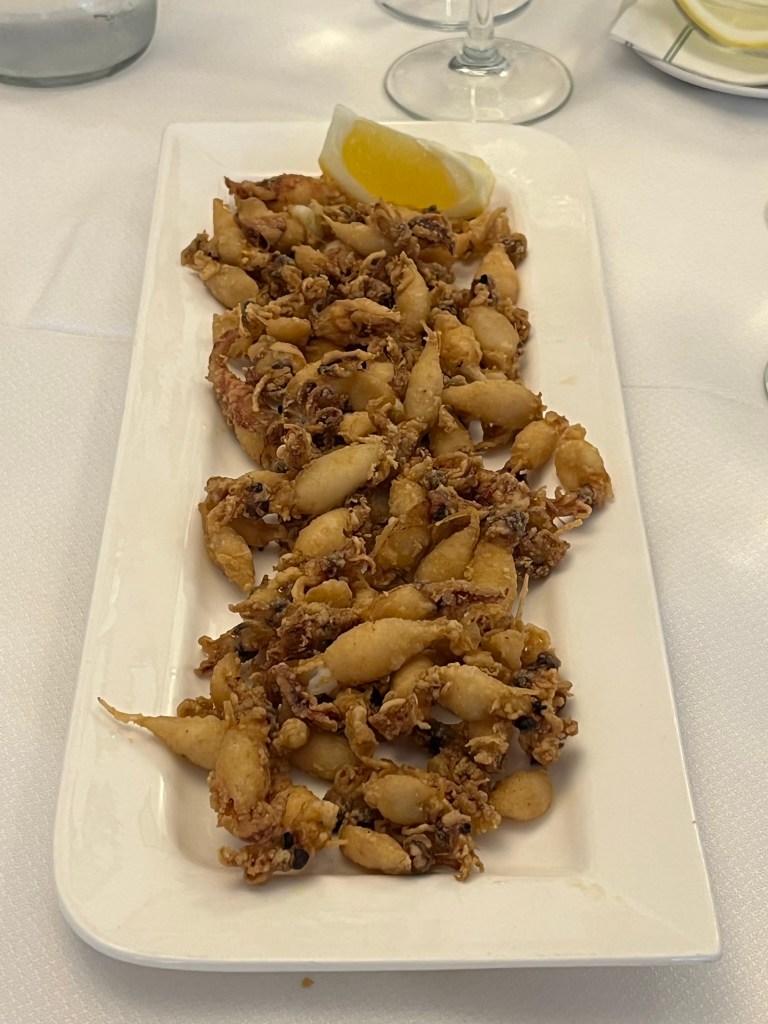By Alison Ramsey
There is a first time for everything. First time visiting Menorca in the Balearic Islands of Spain; first time eating traditional lobster stew; first time holding a live lobster! The first two “firsts” were by choice, and the third was a complete surprise, as waiter Carlos at Es Cranc in Fornells Harbor gestured for me to hold out my hand and suddenly I was gripping a ridged pair of long antennae in my fist, with a huge lobster hanging at the bottom of them.

This particular lobster did not end up in our soup bowls at lunch, but a similar one did, and it was key to the flavor of this traditional Menorcan dish. Invented by fishermen and later tweaked by chefs across the island, caldereta is the most renowned dish of Menorca’s seafood cuisine and can be made with lobster, eels, and varieties of fish. Surprisingly, the lobster that visitors relish in Menorca was once considered by islanders to be food for the poor due to its overabundance. Now it is a highly coveted gastronomical treat that restaurateurs take pride in preparing, especially during peak tourist season.



The tanks at Es Cranc can hold 3,600 lobsters—all from Menorca only. Elevated trays hold the lobsters that arrive that day, whereas lobsters from previous catches crawl along the bottoms of the tanks.
Caldereta de langosta (spiny lobster stew) is a simple recipe traditionally made by braising the locally caught spiny lobster over high heat with a savory sauce containing peppers, onions, tomatoes, garlic, and parsley. Typically served with homemade bread, you can soak the sauce into the slices, or you can simply spoon it up. The lobster stew served at Es Cranc contains several large, meaty portions of tender lobster in a hot, flavorful broth. Dainty eaters, don’t despair—Es Cranc provides bibs, lobster picks, and small bowls of cleansing water for messy hands.



The word “caldereta” refers to the earthenware cauldron in which the stew is prepared.
Whether it’s your first trip to Menorca or you’re a repeat visitor, plan for a meal at Es Cranc. You, too, might get to hold a wiggling crustacean!


Gin Xoriguer is the most popular Menorcan gin, made from grapes and juniper berries. The distillery has used traditional methods to make this drink for almost a century, and the creator’s family windmill featured on the unique bottle has become a recognizable symbol of the island. Mixed with lemonade, this gin makes a delightfully refreshing drink called a pomada.
Lobster Stew Recipe
A traditional recipe for lobster stew, as printed in Menorcan Cuisine Yesterday and Today: Undiscovered Recipes.
Ingredients
2 kg lobster
2 onions
2 cloves of garlic
1/2 green pepper
250 g tomatoes
1 bunch of parsley
7 tbsp. of olive oil
1.5 litres of water
slices of bread for soup or toasted bread
salt
Preparation
Cut the live lobsters into two on a wooden chopping board, separating the head from the tails; reserve the juices in a separate bowl. Split open the body and remove the black intestines using your hands or one of its feelers or antennae. Remove the legs and other feelers. For female lobsters, place the eggs in the bowl, and do the same with the stomachs and livers. Finally, cut the heads in half down the middle, and cut the bodies into slices, making sure to save all the juices.
Finely chop the onion, garlic and green pepper. Place the oil in an earthenware pot and gently fry the vegetables over a low heat. When the onion is translucent, add the very finely diced tomatoes (or they can be grated or blended). Cook over a very low heat for around 10 minutes.
Place the lobsters in the pot and leave to cook a little. Then add the juices, water and chopped parsley, season with salt and cook over a high heat for 15 minutes. When it starts to boil, reduce the heat and cook for a further half an hour.
Meanwhile, grind the lobster eggs, stomachs and livers in a pestle and mortar with a little garlic and parsley, adding the rest of the liquids and a little water to moisten the mixture. When there are just a few minutes’ cooking time left, add the mixture to the pot.
Turn the stove off and leave the stew to rest for at least two hours. In fact, it will be much tastier if made the day before eating. To serve, pour the broth with the lobster pieces into soup bowls, with slices of toast.








One response to “Menorcan Lobster Stew: A Seaside Specialty”
[…] in the Bay of Fornells, the perfect place to delight your palate with the famous lobster stew, the island’s most emblematic dish. It has a cliff where you can relax while watching the […]
LikeLike